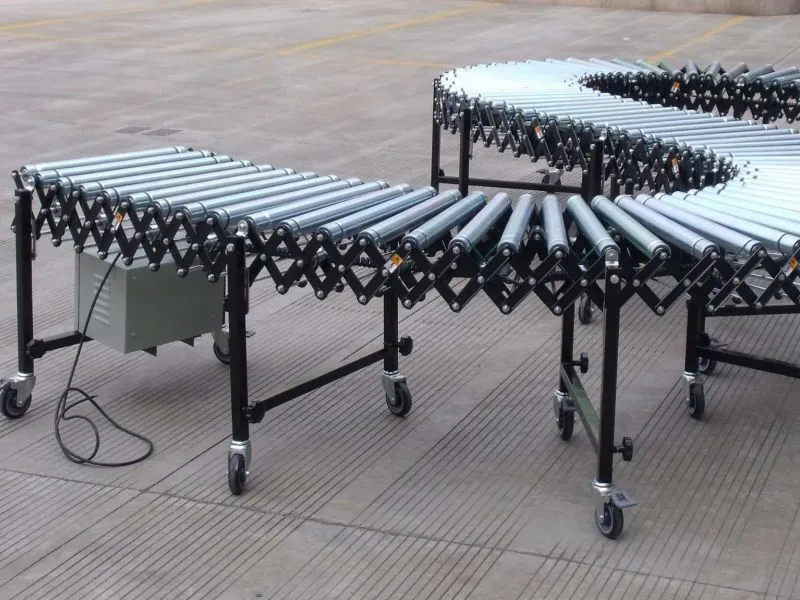
Types of Conveyors Used in Warehouse and Logistic
When adding a conveyor line to your existing operation, it is important to not only consider the basic manufacturing of the equipment itself, but also the design, engineering, and installation for each individual system. Each facility has unique needs, so numerous operational aspects must be taken into account to ensure that the conveyor system selected provides the desired benefits.
Factors that must be taken into account include:
- Materials the system handles
- Operation environment
- Space and configuration
- Access requirements for equipment and personnel
- Speed and throughput volume
- Required maintenance
- Level of automation
Types of Industrial Conveyor Systems
Although some conveyor systems are used for simple, individual tasks, industrial conveyor systems typically include various functions and are integrated to perform more complex operations. Conveyors have dozens of classifications and have been engineered into a wide variety of configurations. Below is a short overview of a few common types of conveyors, their uses, and their benefits.
Belt Conveyors
Typically the first term that comes to mind when someone thinks of the word "conveyor" is "conveyor belt." Also one of the most common types of conveyors, belt conveyors are simple - and low cost - in their methodology of moving products from point A to point B. Construction of belt conveyors differs, but generally, all are composed of modular plastic or continuous flexible belts which are operated through the use of pulleys or sprockets. They are effective in moving an assortment of product shapes, sizes, and weights while maintaining full control. Belt conveyors can be customized into various layouts including inclines/declines and curves, and are used within countless production lines, warehouses, fulfillment centers, various sortation systems, and even applications that require moving bulk materials. You can get truck loading conveyor and telescopic belt conveyor from us.
Roller Conveyors
Roller conveyors move items and materials using parallel-mounted rollers which facilitate smooth movement. They can be designed in a number of different variations. The most basic format is gravity roller, where the rollers are non-powered and the products travel along them freely. When mounted on a slight decline, the product will use gravity to provide the motive force in that direction. Additionally, skate wheel gravity conveyors operate the same way but instead of rollers, a series of narrow skate wheels are mounted and "roll" more easily, allowing for use with lighter packages. Our flexible roller conveyors are widely used in logistic of all industries.
Chain driven live roller (CDLR) is another design and uses a combination of rollers with sprockets linked with a chain. This type is commonly used for handling heavy products with flat bottoms, or pallets. CDLR conveyors are advantageous for their powered control, and ability to withstand harsh operating conditions. Options can allow for the accumulation of products- where the line continues to run, but the products will line up in the queue on the conveyor. As a workhorse in the industry, this type of conveyor is often used for delivery systems in assembly lines, packaging facilities, food processing applications, and plenty more. You can get flexible powered roller conveyor from us.
Motorized Roller Conveyors
One of the most recent designs of the roller conveyor system answers the question: instead of one motor running all rollers together, what if a small motor is put inside the roller? Each one of these motorized rollers would power its own section of rollers - or even a short belt - via drive bands, creating individual "zones." Various levels of control are available to suit the requirements. Photo-eye sensors trigger the motorized roller when the space is clear, prompting products to move from zone to zone for zero-pressure accumulation. This sophisticated type of conveyor uses low voltage power which can result in plug and play installation. This design is particularly useful in warehousing, distribution, and various assembly/manufacturing applications, and allows for smoother, more precise movement of products along the line without contact.
Chain Conveyors
Chain conveyor systems use chains and sprockets with appropriate frames and drives for rugged construction. They include floor mounted and overhead types and come in a broad range of designs to meet the needs of a variety of applications. Floor mounted conveyors are typically employed in applications that require the movement of heavy objects including pallets, gaylords, and drums. Many styles of right-angle transfers also utilize this design. They are found in assembly & packaging lines, and in a wide array of industries such as pharmaceutical, cosmetics, and consumer goods. In warehousing, distribution, and manufacturing projects, an overhead continuous chain conveyor can be utilized for transport or returns of products, parts, packaging materials, and containers when floor space is at a premium.
Vertical Conveyors
Combining a few styles of conveyors into a final category, vertical conveyors are a catch-all to describe systems that raise or lower products from one area to another at a different elevation or on a different floor. Spiral conveyors are a common type, which use a special belt or chain in a rotary vertical motion to change elevation for products while taking up less floor space than an incline. Vertical lift conveyors are another type and are categorized into either reciprocating or continuous, each being highly versatile. These types of conveyors are found in many applications, including warehouse/distribution centers, pharmaceutical plants, food & beverage processing, general manufacturing, and consumer goods production.
Integrated Conveyor System Solutions from Precision Automation
There are several additional types of conveyor systems to review and discuss, but most of what we deal with fall into one of the groups mentioned above. And it takes more than a simple categorization to determine the ideal conveyor system for a given project. The particular product being conveyed factors most heavily in the selection process of conveyor type, length, width, speed, and more. However, if a customer wants something totally unique that does not fit into a general category, our team will design and manufacture a custom system.


Leave Me Your Requirement!